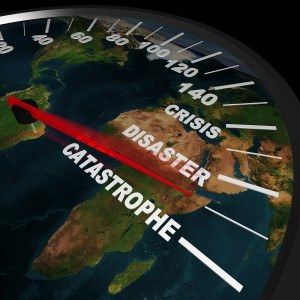 Here’s an ominous milestone for the property/casualty industry: 2018 will likely be the second consecutive year where insurance claims payouts related to annual U.S. wildfires will exceed $10 billion.
Here’s an ominous milestone for the property/casualty industry: 2018 will likely be the second consecutive year where insurance claims payouts related to annual U.S. wildfires will exceed $10 billion.
That’s according to the latest Global Catastrophe Recap report from Aon’s Impact Forecasting, which tallied the impact of natural disaster events globally during November 2018.
The report recaps a series of major wildfires that burned across Northern and Southern California throughout the month. The most catastrophic, the Camp Fire in Butte County, largely destroyed the city of Paradise, killing 88 people, with dozens of others unaccounted for.
The California Department of Forestry and Fire Protection, CalFire, cited that 19,357 homes and other structures were damaged or destroyed, making the Camp Fire the deadliest and most destructive on record in California, Aon/Impact Forecasting noted. Additionally, three people were killed in the Woolsey Fire as the fire damaged or destroyed nearly 2,000 structures in Ventura and Los Angeles counties.
Total aggregated economic losses for the fires were expected to minimally exceed $10 billion, while insurance claims payouts for wildfires are set to exceed $10 billion in the United States for the second year running, according to the report.
Steve Bowen, Impact Forecasting director and meteorologist, suggested that the two-year, $10 billion-plus payout might point to wildfires leaving behind their status in the U.S. as a secondary peril in the years ahead.
“With annual wildfire industry payouts expected to exceed $10 billion for the second consecutive year in the United States, the standard assumption of wildfire being a secondary peril may evolve in the future,” Bowen said in prepared remarks. “While insurers remain firmly in position to handle the volume of claims in the aftermath of recent events, these heightened losses put a further spotlight on the growing risk of the peril around the world.”
Bowen said that the evolution of wildfires hitting the same locations regularly “and the prospect of more weather and climate-driven effects will require continued focus on mitigation initiatives.”
Other storm highlights from the month:
- Cyclone Gaja, which made landfall in southern India, killed 46 people and damaged more than 117,500 homes. Estimated economic impact surpasses $775 million.
- Tropical Depression Toraji in Vietnam killed 19 people as damage reached at least $17.2 million. A weakened Typhoon Usagi brought record rainfall to the greater Ho Chi Minh metro area in Vietnam, causing at least $15 million in damage.
- A magnitude 7.0 earthquake struck just north of Anchorage, Alaska on Nov. 30, causing widespread damage to residential and commercial property in addition to local transportation and utility infrastructure. Total economic losses were expected to exceed $100 million.
- Parts of Italy and Spain dealt with complex storm systems and flooding during the end of October into November. In Italy alone, the inclement weather killed dozens of people. Economic damage was expected to surpass $3.4 billion. In Spain, one person was killed as flooding caused severe damage to infrastructure and agriculture. Crop damage in the Valencian region alone will range from $80 million to $140 million.
- Chile dealt with strong thunderstorms featuring large hail and intense rainfall, which left behind significant agricultural damage. Agricultural industry authorities estimated that economic losses would hit $200 million.
- Heavy rainfall swept across parts of the Middle East, prompting flash flooding and dozens of casualties. Damage in Kuwait alone was listed at $330 million.
Source: Aon’s Impact Forecasting





















 Federal Aviation Notice Warned of Slackline Before Deadly Arizona Helicopter Crash
Federal Aviation Notice Warned of Slackline Before Deadly Arizona Helicopter Crash  NOAA Announces Latest AI-Driven Global Weather Models
NOAA Announces Latest AI-Driven Global Weather Models  Why ‘Good Enough’ Is Killing Insurance: The Hidden Cost of Satisficing
Why ‘Good Enough’ Is Killing Insurance: The Hidden Cost of Satisficing  Artificial Intelligence Is Rewriting the Rules for Commercial Lines
Artificial Intelligence Is Rewriting the Rules for Commercial Lines 





